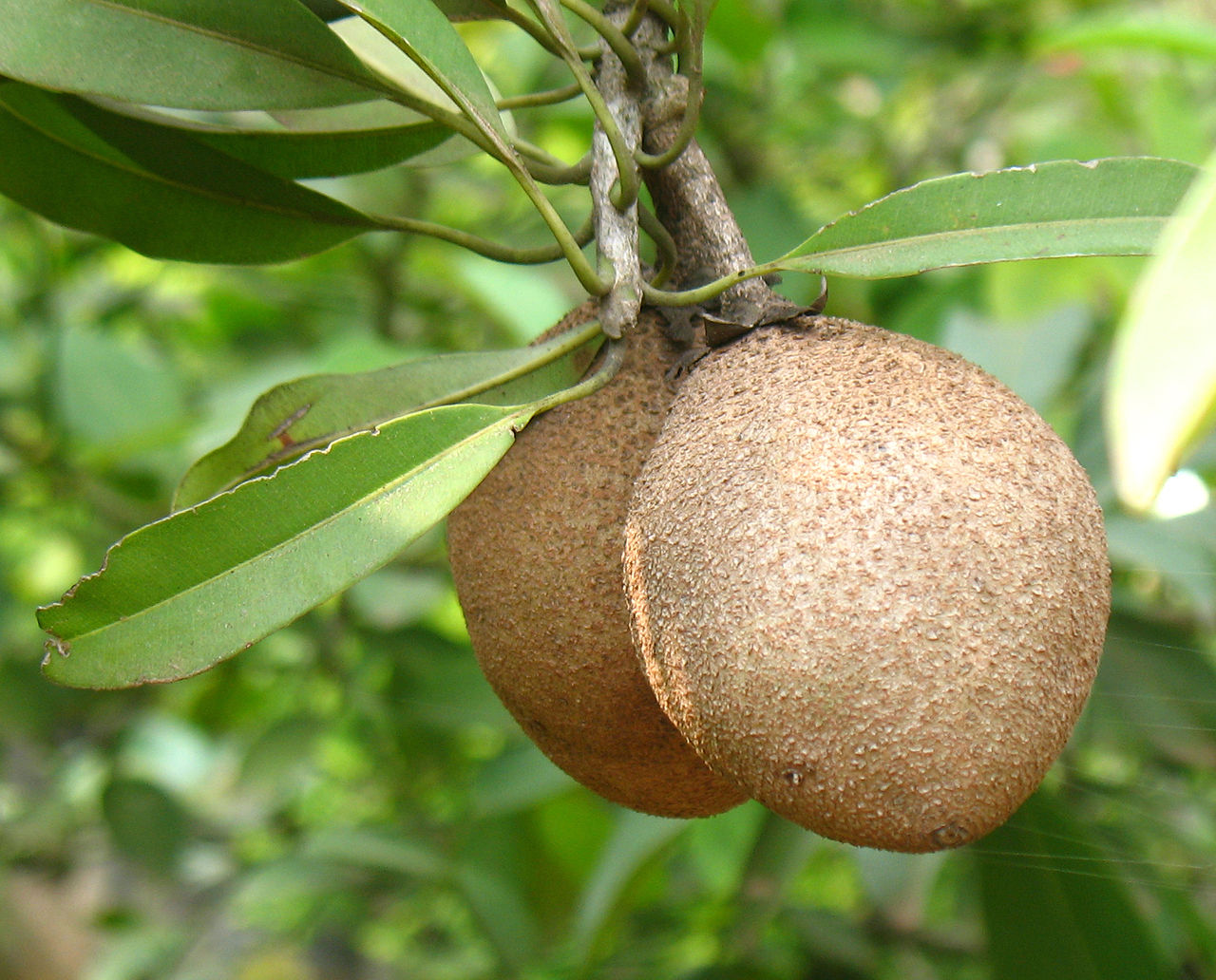
Tropical Wild Edibles- The Sapodilla
Botanical name: Manilkara zapota
Common names: Sapodilla, sapota, Chikoo, Chico, Naseberry, Nispero, mispel
Family: Sapotaceae

Physical appearance: A tropical evergreen tree growing to a maximum height of approximately 30 metres but averages at about 15 metres. The Average trunk diameter is approximately 50cm.The tree is known for being robust when it comes to strong winds. Interestingly, the bark contains large amounts of chicle (a gummy latex now used in the production of chewing gum). Its leaves are a medium green and glossy. The sapodilla produces white flowers which have a bell like form. The sapodilla fruit is a large berry approximately 2-3 inches in diameter. When ripe, the fruit has a saggy skin and will exude chicle from the stem, when picked. When ripe, the fruit has a consistency similar to that of an overripe pear. The fruit contains two to five large, black shiny seeds. Overall, the tree can only survive in a warm, tropical environment as even relatively mild frosts will kill the plant. The tree will take between 5 and 8 years to reach maturity and start producing fruit.

Natural habitat: Originating in Mexico, the Caribbean and Central America but now grown as a crop in many other parts of the world including the Philippines, India, Pakistan, Cambodia,
Uses: Largely consumed as a raw fruit, with a flavour comparable to caramelised pears. When ripe, the fruit has a consistency similar to an overripe pear. Other culinary uses for this fruit include: making smoothies, custards, cakes and ice creams.

Point of interest: When unripe, the fruit contains masses of tannins and latex both of which are unpalatable and can cause serious health issues. The chiclet or latex it produces was used for chewing gum for thousands of years (including use by the Mayans) up to modern-era where it was replaced by synthetic substitutes. Originally, it was also used to clean teeth and as an appetite suppressant.
Photos courtesy of
Sugeesh at Malayalam Wikipedia, CC BY-SA 3.0 <https://creativecommons.org/licenses/by-sa/3.0>, via Wikimedia Commons
“Keith S Brown (Ksbrown)”, CC BY-SA 2.5 <https://creativecommons.org/licenses/by-sa/2.5>, via Wikimedia Commons
No machine-readable author provided. Hans B.~commonswiki assumed (based on copyright claims)., Public domain, via Wikimedia Commons


